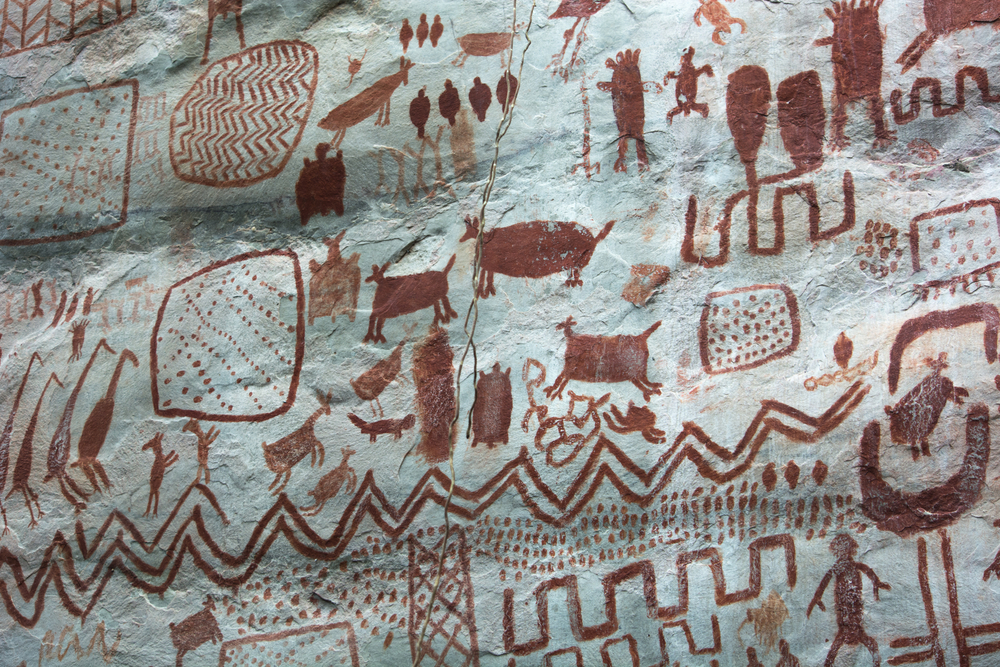Massive Ochre Cave Paintings are Traces of Ancient Human Migration in the Amazon
Posted on Categories Discover Magazine

Around 13,000 years ago, humans made their way into the Amazon Basin region of South America, imparting distinct traces of culture such as massive ochre cave paintings.
Revealing new information about early human migration, research spearheaded by archaeologists at the University of Exeter; the University of Antioquia, Medellín; and the University National of Colombia, Bogotá has delved into the lives and activities of ancient humans who took shelter in caves throughout the region. The findings were published in a recent edition of Quaternary Science Reviews.
“The results firmly establish that the human occupation of Serranía La Lindosa began in the late Pleistocene, about 12,600 years ago, and continued until the 17th century,” said José Iriarte, professor of archaeology at the University of Exeter, in a press release.
Read More: What Is the Difference Between Early Modern Humans and Ancient Humans?
Ancient Human Culture in the Amazon Basin
Archaeologists excavated and analyzed material at two rock shelters four kilometers apart in the Serranía La Lindosa region of Colombia, known for its captivating rock art images. By studying soil at the sites, the team could pinpoint the presence of human activity. The humans at these shelters spent their days producing stone tools, managing plant resources, and preparing ochre (a natural Earth pigment) for cave paintings.
“Activity patterns, artifact discard, and soil chemistry indicate that both rock shelters were used as domestic spaces through time, as well as sacred locations for the display of highly evocative art,” said Jo Osborn, postdoctoral research associate, in a press release.
They found that when the shelter was occupied, based on stone fragments, charcoal, and organic matter, ancient humans used it for food preparation, consumption, and disposal. The team also determined periods when the shelters had been abandoned, often for more than a millennium at a time.
“The exceptional number of rock shelters found in the region with evidence of human habitation suggest that this area was an attractive landscape for forager groups, where they could access palm-dominated tropical forest, savannah, and riverine resources,” said Iriarte in a press release.
Various materials within the soil exhibited the extended occupation of Serranía La Lindosa. Archaeologists discovered ceramics dating to around 3,000 years ago, evidence of soil cultivation from 2,500 years ago, and traces of maize from 500 years ago. Other recovered items, including animal bones, plant remains, and ochre, are still being examined as well.
Read More: Stone Tools Question the Evolution of Ancient Human Culture and Technology
How Did Humans Migrate Into South America?
The movement patterns that humans followed deep into the Americas — the last continents to be inhabited by humans — have been consistently debated throughout the years.
A 2022 study used genetic evidence to confirm that early humans migrated down Central America and along the Pacific coast of South America in a north-to-south route. It suggested that humans then traversed a south-to-north route up the Atlantic coast, moving from Uruguay to Panama.
The study also observed evidence of Neanderthal DNA in the genomes of ancient humans in South America. However, ancient genomes in Uruguay and Panama contained a greater presence of Denisovian DNA than Neanderthal DNA, raising even more questions about genetic admixture across the continent.
Although questions about ancient humans in South America persist, further research — such as the recent study at Serranía La Lindosa — continues to unearth answers.
Article Sources
Our writers at Discovermagazine.com use peer-reviewed studies and high quality sources for our articles, and our editors review for scientific accuracy and editorial standards. Review the sources used below for this article: